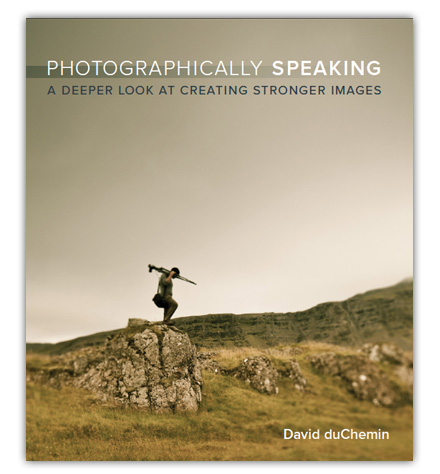Thursday read – how to analyze an image – “Photographically speaking” by David DuChemin
Talking about photographs doesn’t come easy to most people. I know the problem very well myself. Each day, I open the New Post on my blog. I find the perfect image in my Lightroom library, post process it to make it look like a better version of itself, and upload to the post. And then I try to talk about it. Sometimes, the words just not fly at all. Sometimes, I will talk about the situation which placed me in the vicinity of the shot. Sometimes, I will talk about those fantastic sliders in Lightroom which made the image be what it is now. I never talk about why I used particular crop or aperture.
When I saw this promotional video about the latest book by David DuChemin “Photographically speaking” – I was thrilled. I knew the book will solve all those problems. Like many other photographers, I wanted to talk more knowledgable about my (and other’s) photographs, I wanted to be able to dissect them to the elements.
“Photographically speaking” is naturally derrived from David DuChemins previous writings, e-books like “Ten”, “Deeper Frame” or “Inspired eye”. A lot of concepts and ideas are repeated here, but explored in greater depth and in relation to the “big picture”.
This book is divided into three parts.
Part 1 is focused on photographer’s intent. David DuChemin talks here about mindfully choosing the settings on camera as well as elements in the frame, and how they are arranged and how they relate to each other in order to make the photograph what you, the artist, want it to be.
Part 2 is devoted to the visual language. It is a comprehensive list of all the words in the language, including but not limited to lines, repetition, contrast, color, light, gesture, framing, crop ratio, depth of field. It has a great explanation of basic composition by not using the rule of thirds or golden spiral, but by understanding the balance in the image on more subconscious level.
Part 3 is where all the lessons from the previous chapters come together. 20 example photographs are presented and dissected by author to the most basic elements. The history behind the image is given first, then intent, followed by all the small decisions made, sometimes in the blink of an eye. It is explained how each of those decisions influenced the final aesthetic of the final photograph. These are the lessons for people who understand already or don’t care about ISO, shutter speed and aperture. Those next steps are maybe the leading lines and black and white conversion. But who really gives a second thought to different cropping ratios? And how use of wide-angle or telephoto lens changes not only how far you are from the subject?
“Photographically speaking” is a very comprehensive book for photographers, photography critics and photography bloggers. It teaches how in depth analyze images, which proves to be a very useful skill. It enhances learning the craft from both studying others work as well as taking a closer look at your own.
It is, in a sense, the most technical book by David DuChemin. You can see how his admiration of tilt-shift lens, Lensbaby and filter comes through the pages of text. And there is nothing wrong with that. After all, even if photography is not all about the gear, the gear gives us tools to go beyond “normal” view of 50 mm lens.
“Photographically speaking” is available as hard copy or Kindle e-book from Amazon store by clicking here. You can also get both a hard copy or electronic book from Peachpit by clicking here.
The links in this post are affiliate links. See details of our affiliate policy here.
